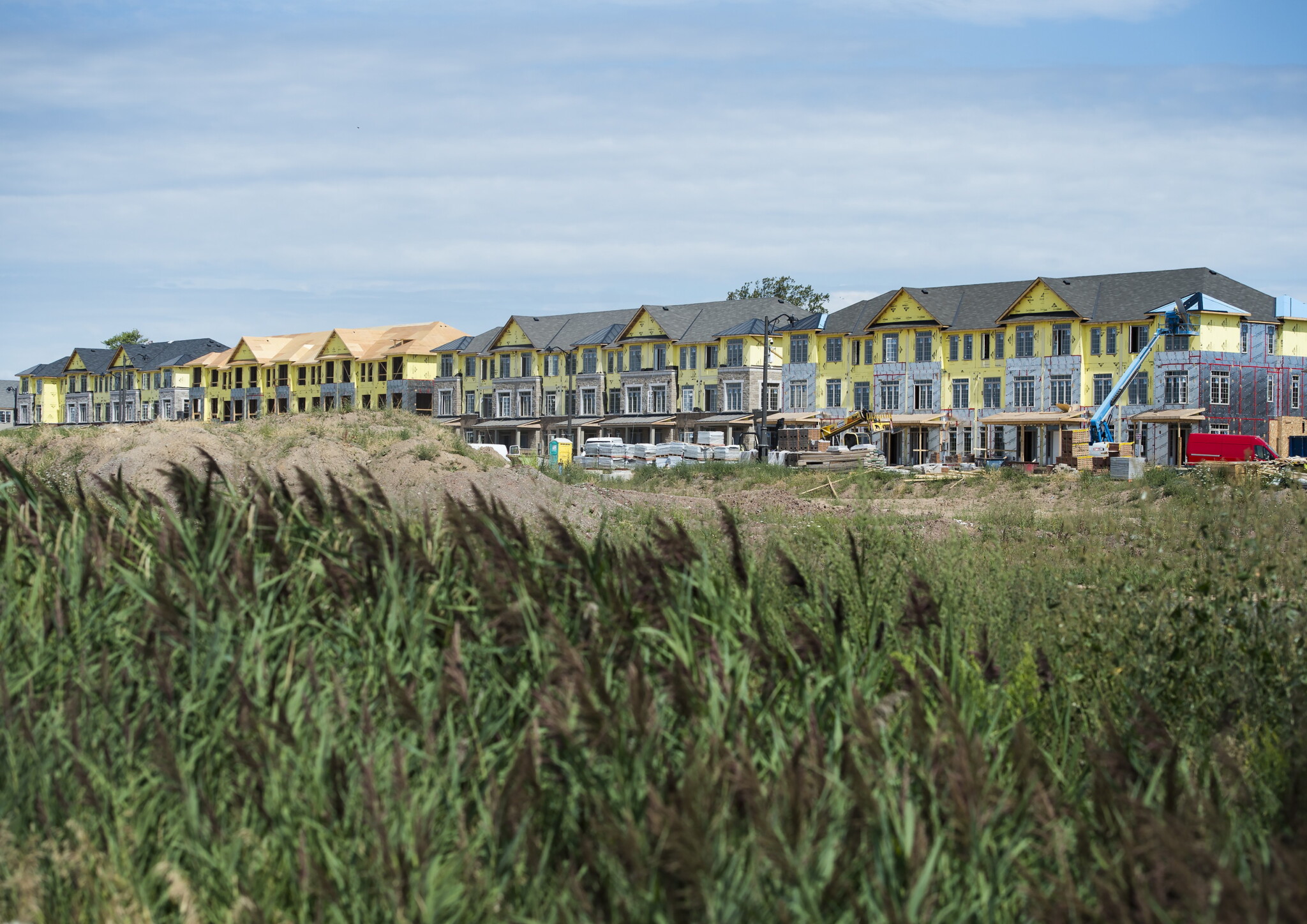
The Hub’s second annual Hunter Prize for Public Policy, generously supported by the Hunter Family Foundation, focused on solving Canada’s housing affordability crisis. A diverse group of ten finalists have been chosen from nearly 300 entries, with the finalists and winners chosen by an esteemed panel of judges, including Amanda Lang, Ben Rabidoux, and Mike Moffatt. The Hub is pleased to run essays from each finalist this week that lay out their plans to help solve this persistent policy problem.
Canada is in a serious housing affordability crisis: less than 1 percent of rentals across major cities in Canada are vacant and affordable for those with annual before-tax household income under $118,740.
In response, all levels of government across Canada have taken approaches to deliver affordable homes, including inclusionary zoning, community contribution charges, and direct funding.
However, our current approach results in an inevitable trade-off—delivering more affordable housing units could mean:
- Escalating provincial and federal expenditures on government-led housing projects and direct housing grants, contributing to our growing deficit.
- Increasing municipal contribution charges allocated to affordable housing, leading to higher rent and housing prices.
- Delayed delivery of market-rate housing as a result of inclusionary zoning/housing.
Simply put, our current path to building more affordable housing could make our new homes even more unaffordable.
The Below-Market Rental Tax Credit Program (BMRTC) could solve our predicament.
The proposed BMRTC Program offers an alternative approach to financing affordable housing. Through tax credits, the program incentivizes non-profit and for-profit organizations to acquire, construct, and rehabilitate below-market rentals in census tracts with a low concentration of affordable housing.
Specifically, the BMRTC Program operates as follows:
- Through the Canada Revenue Agency, the federal government allocates non-refundable, 10-year tax credits to provinces based on population.
- The provincial government awards these credits to qualified projects in a competitive process. Eligible projects must be at least partially occupied by tenants with incomes below a specified percentage of the CMA median income, with rent capped at a set percentage of this income. The province will set the exact income and rent requirements.
- The tax credit for each project will be calculated based on the estimated cost of the project. Projects with existing public support will receive a maximum of 5 percent tax credits annually (e.g. projects receiving low-interest loans from the Canadian Affordable Housing Fund); otherwise, they receive a maximum credit of 9 percent annually.
- Homebuilders with qualified projects can use their 10-year tax credits in any or all of the following ways:
- Homebuilders can liquidate the tax credits to reduce upfront costs and improve the project’s financial viability.
- Through the syndicators, the tax credits are packaged into investment offerings or formed into joint ventures with investors, sharing costs and attracting capital into the below-market rental market.
- Once the project is ready for occupancy, the investors can claim the credit over 10 years.
- If the project does not comply with its affordability requirements, the tax credits will be recaptured.
This model has demonstrated significant success in the U.S.: from 1987 to 2021, the Low-Income Housing Tax Credit (LIHTC) Program has delivered over 3.5 million affordable housing units. According to the U.S. Department of Housing and Urban Development, the LIHTC is the “most important resource for creating affordable housing in the United States today.”
Modeled after the LIHTC, what can the BMRTC Program achieve in Canada?
Using data from the LIHTC Program as a benchmark and accounting for approximately 20 percent higher costs in Canada as well as Canada’s population in 2024, the BMRTC Program has the potential to deliver the following results:
- Delivering 14,960 units of affordable housing.
- Attracting approximately $2.17 billion in private investment annually.
- Costing $10,146 per unit annually in tax credit.
- Present value of the total 10-year tax credit per unit is $78,340 at a 5 percent discount rate.
To put this in context, Ottawa received 171 million in 2024 from the federal government to construct 400 affordable housing units. Translated to cost per unit, the initiative would cost taxpayers $427,500 per unit, which is 5.5 times more costly than the BMRTC model.
With the BMRTC’s potential to unlock 14,960 units annually, governments can significantly reduce their reliance on direct funding for affordable housing.
With the growing political momentum to eliminate municipal gatekeepers that hinder housing supply, the BMRTC Program alleviates local governments’ pressures on delivering affordable housing. The housing units created through the program grant municipalities the political leverage to reduce regulatory barriers, such as inclusionary policies and community contribution fees, thereby expediting the delivery of market housing.
The BMRTC Program can also contribute to building safer and more integrated communities.
Unlike the LIHTC, the BMRTC Program requires all eligible projects to be located outside of a census tract with a high concentration of below-market rentals in the province. Adding the de-concentration requirement encourages mixed-income integration and helps revitalize Canadian urban communities facing significant urban decay, such as the Vancouver Downtown Eastside. Deconcentrating these neighbourhoods through the BMRTC Program also empowers individuals supported by our social housing initiatives to escape from the perpetuating cycle of poverty and the persistent threat of violence.
But is the BMRTC model feasible in Canada?
Tax credit is not an entirely new concept—we have already seen examples in Canada including the Electric Vehicle Supply Chain Investment Tax Credit and the Clean Economy Investment Tax Credit. However, existing tax credit programs in Canada are usually simple to operate with no syndicators involved. Canadian banks’ experience as syndicators in the U.S. could facilitate the operation of the BMRTC program. RBC, for instance, has 1,082 affordable housing tax credit assets under administration as of June 2024.
To address the potential administrative and operational difficulties, it is recommended that the governments start with a program smaller in scope compared to the LIHTC model. The BMRTC can start with a provincial pilot program in BC or Ontario, with a per capita tax credit allocation at one-fifth or one-tenth of the LIHTC level. If the initial pilot program is successful, BMRTC can then expand to other provinces nationwide.
The BMRTC Program offers a transformative solution to the housing crisis by increasing the supply of affordable housing while lowering public expenditure, taxes, and regulatory barriers. This approach has the potential to receive a broad public appeal, bringing together urbanists, affordable housing advocates, free-market supporters, and homebuilders in a concerted effort to tackle the urgent housing challenges confronting all Canadians.










